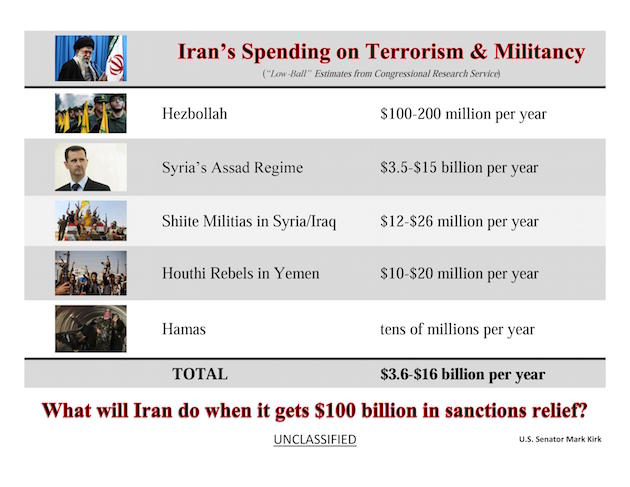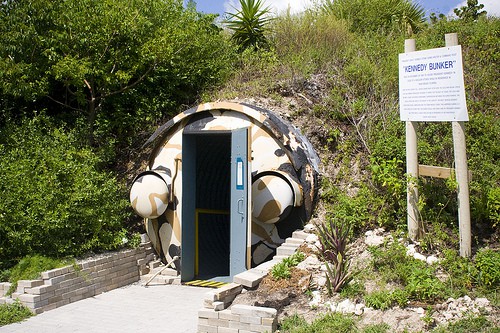Obama has officially won on the Iran deal. How?

In part from the Hill:
The White House —which has a reputation for keeping an arms-length relationship with Capitol Hill —mounted an all hands on deck effort in the three weeks after the deal was signed and before lawmakers left town for the August recess.
Secretary of State John Kerry, Energy Secretary Ernest Moniz and other top officials became fixtures on Capitol Hill and sought to answer every lawmaker’s questions in person before they fanned out across the country.
Moniz was the ringer, offering a detailed yet affable performance that contrasted with Kerry’s more pedantic style, and earned him the affection of even the deal’s most bitter critics.
The president, too, got personally involved, and refused to relent once Congress left town.
Obama spoke to more than 100 lawmakers in individual or small-group settings, according to a White House official, including 30 calls during his two-week August vacation in Martha’s Vineyard, Mass.
Cabinet secretaries and senior administration officials made the case directly to over 200 House members and senators after the deal was reached.
Supporters were up against heavy artillery. At home, lawmakers were bombarded with tens of millions of dollars’ worth of TV ads from opponents of the agreement such as the American Israel Public Affairs Committee (AIPAC).
To counteract that firepower, organizations such as J Street spent millions of their own to run advertisements in key markets.
Obama also made an open plea for liberal groups to lend him a hand.
“As big of a bully pulpit as I have, it’s not enough,” Obama told thousands of activists in July. “I can’t carry it by myself.”

But what do the Republicans know that the Democrats also know but are ignoring because of the covert Iran money deals to the Democrats?
Iran spending billions on terrorists’ salaries: report
Iran has been sending billions of dollars to fill the pockets of terrorist fighters across the Middle East, including in Yemen, Syria, Lebanon and the Gaza Strip, according to a private U.S. government report ordered by Sen. Mark Kirk.
Iran’s defense budget ranges anywhere between $14 billion to $30 billion a year and much of that money goes to fund terrorist groups and rebel fighters throughout the region, according to the Congressional Research Service report conducted at the request of Mr. Kirk, an Illinois Republican.
The report, first viewed by The Washington Free Beacon, discloses that funding for these terrorist groups could be much higher than originally estimated, as Iran often hides public records about its defense spending.
“Some regional experts claim that Iran’s defense budget excludes much of its spending on intelligence activities and support of foreign non-state actors,” the report states, stressing that actual military spending could far exceed the $30 billion that Iran discloses annually, The Free Beacon reported.
“Similarly, another study claims that actual funding for the [Iranian Revolutionary Guard Force’s Al Quds Force] is ‘much greater’ ” than the amount allocated in the state budget, as the group’s funds are supplemented by its own economic activities,” the report said.
The report gives “low-ball” estimates for each of the groups supported by Iranian funding. Researchers estimate Iran spends between $100 million and $200 million per year on Hezbollah, $3.5 billion to $15 billion per year in support of Syria’s Asad Regime, $12 million to $26 million per year on Shiite militias in Syria and Iraq, $10 million to $20 million per year to support Houthi rebels in Yemen and tens of millions per year to support Hamas terrorists in Israel.
In Syria, for example, Iranian-backed fighters are paid between $500 to $1,000 a month to fight in support of Bashar Assad’s regime, according to the report.

Afghan fighters in Syria have disclosed that they “had recently returned from training in Iran and planned to fight in Syria,” the report notes. These militants “expected to receive salaries from Iran ranging from $500 to $1000 a month.”
The report comes as the Obama administration gained the final critical vote needed to suppress a resolution to disapprove a nuclear deal with Iran. Under the deal, the U.S. and other world powers will gradually lift economic sanctions on the Islamic Republic in exchange for dismantling its nuclear weapons program.
Similar reports from watchdog groups have revealed that releasing Iranian assets sanctions could allow Tehran to spend more money on its terrorist-link Quds force, as well as beef up its own military in general.
“The administration is celebrating support from a partisan minority of senators for a nuclear deal that threatens the security of the United States and our allies,” Mr. Kirk said, The Free Beacon reported. “This deeply flawed agreement will transfer over $100 billion to a regime that U.S. Director of National Intelligence James Clapper calls the ‘foremost state sponsor of terrorism,’ and pave Iran’s path to nuclear weapons.
“Like North Korea before it, Iran will cheat on this flawed deal in order to get nuclear weapons. Congress must hold accountable the Iranian regime and ensure that our children never wake up to a nuclear-armed Iran in the Middle East.”

The report is located here and everyone in Congress has access.

CSMonitor: One of the beneficiaries will be Iran’s primary tool for projecting power – the Islamic Revolutionary Guard Corps (IRGC), and especially its elite Qods Force, which handles operations abroad.
But are Iran’s wizened generals, who mostly cut their military teeth in the 1980s as teenage volunteers during the brutal Iran-Iraq War, already in danger of overreach?
For decades, American military planners aimed to be capable of simultaneously fighting – and winning – two full-blown wars in different regions. It was a challenge, even for a superpower. Today, on a much smaller scale and with a sliver of the military means, Iran is attempting the same thing in the Middle East: It is deeply engaged in Syria and Iraq; waving the flag in Yemen; and very influential in Lebanon.
Never before has the Revolutionary Guard, whose 120,000-strong force is much smaller than Iran’s regular 425,000-strong armed forces, been engaged so deeply and widely abroad – yet with increasingly mixed and entangling results.
There is no shortage of commitment: at least seven IRGC generals have died on the frontlines, primarily in Syria but also in Iraq, taken down by snipers’ bullets, bombs, and even an Israeli airstrike. The Guards are relatively top heavy with generals due to their origins as an ideological militia. Still, such high-ranking losses are highly uncommon in modern warfare.
In Syria, the IRGC and its Lebanese Shiite ally Hezbollah are bolstering the regime of President Bashar al-Assad against an array of rebels and jihadists. In Iraq, Iran has mobilized Shiite militias to take on the self-described Islamic State, but at a cost of stoking more sectarian strife. While in Yemen, Iran has played a much lesser role in aiding Houthi militiamen against Saudi-backed forces.
Each conflict has now devolved largely along sectarian lines that pit Shiite Iran against its regional Sunni rivals, Saudi Arabia and Persian Gulf states allied with the US and Israel.
The IRGC “exceeded their reach long ago.… They are at the end of their tricks [in Syria], and Hezbollah lost a lot,” says Walter Posch, a specialist on Iranian military forces at the Austrian National Defense Academy in Vienna.
“It worked well when it was low cost, but now it is high cost.… There is no Saddam Hussein who insulted the Iranian nation as a whole” as a national motivating factor, as in the 1980s, says Mr. Posch. “This is a war of their own liking, for the purpose of power projection. But they’ve been too ignorant of the fear of the small Gulf countries; too ignorant about the fears of the Saudis.”
Ideological origins
The IRGC was formed after Iran’s 1979 Islamic revolution by Ayatollah Ruhollah Khomeini, who wanted a more trusted and ideologically pure force than the regular Army. The grim years of the Iran-Iraq war consolidated its role – and its anything-is-possible reputation.
Embracing the religious Shiite aspects of resistance in the image of Imam Hossein, the 7th-century Shiite saint venerated as “lord of the martyrs,” the IRGC has since become an economic and political powerhouse. It runs a multi-billion dollar business empire that handles everything from oil and infrastructure projects to weapons production. In politics, active-duty guardsman play no formal role, but its generals are close to Iran’s supreme leader Ayatollah Ali Khamenei, and veterans have held cabinet and other government posts.
“I don’t see signs of overreach; I think they’ve got leadership in depth,” says Richard Dalton, a former British ambassador to Tehran now at the Chatham House think tank in London. “They are tested in difficult situations. They’ve been involved, whether in Lebanon, Iraq, or Afghanistan, for a very long period.”
“It comes back to, ‘Who wins wars?’ People who win wars and are the most effective are the ones with the greatest conviction, and the Iranians have got it,” says Amb. Dalton.
That certainly applies to Qods Force commander Qassem Soleimani, who has often been photographed along frontlines in Iraq and elsewhere. He claimed this week that Iran’s efforts prompted the “collapse of American power in the region,” according to details of a high-level briefing published in Iran’s conservative media.
‘Gobbling’ or choking?
Some argue that Iran’s regional expansion is unprecedented. Addressing Congress in March, Israel’s Prime Minister Benjamin Netanyahu said Iran was “gobbling up” Mideast capitals. Yet the tide now isn’t all going Iran’s way.
In Syria, for example, Iran has been fighting to defend Mr. Assad’s regime for more than 4-½ years, spending an estimated $6 billion to $15 billion a year in a war that has claimed more than 240,000 lives. But pro-Assad forces have lost ground in recent months to rebels backed by the US, Turkey, Qatar, and Saudi Arabia, as well as to the self-described Islamic State.
President Hassan Rouhani has vowed to back the Syrian government “until the end of the road.” While Assad is running short of loyalist troops, the IRGC reportedly has tried to fill the gap by finding several thousand Afghans to fight, and die, in exchange for cash, Iranian residency or passports, and sometimes for commuted jail terms, according to Germany’s Spiegel and Agence France-Presse.
In May, a special event held in Tehran commemorated Afghan martyrs killed in Syria, and 65 corpses were returned in a single exchange, according to Iranian media reports. Many are buried in Iran. Officially, Iran denies enlisting Afghans to fight in Syria.
In Iraq, Soleimani was instrumental in reviving tens of thousands of Shiite militiamen to push back IS for more than a year – in concert with American airstrikes, and ironically with a similar mission as US military advisers now in Iraq. But those militias are accused of atrocities against Sunnis, and efforts to bolster the regular Iraqi military – decisive at first – have begun to stumble.

And in Yemen, Iran has been marginally involved on the side of Houthi rebels as they advanced across the country earlier this year. In July, the critical port city of Aden was recaptured by Saudi-backed forces and troops of the United Arab Emirates. Months of Saudi-led airstrikes are imperiling the population, in a campaign explicitly aimed at rolling back Iranian influence.
“There is support for Soleimani but also high expectations,” says Posch, of the IRGC’s Qods Force chief. “He has to deliver now. I don’t know how he deals with all these crises individually. He can’t go to all these battlefields in person.”








![The five leaders of BRICS met in Ufa, Russia on 9 July 2015 [Xinhua]](https://thebricspost.com/wp-content/uploads/2015/07/243968990_8-e1436462738402.jpg)
![Refugees are prevented by police from entering the Keleti railway station in Budapest, Hungary on September 1, 2015 [Xinhua]](https://thebricspost.com/wp-content/uploads/2015/09/246439412_8.jpg)

